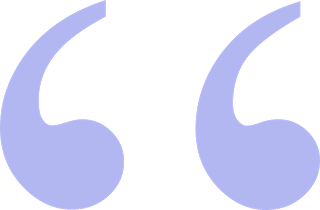Pearl Zhu's Blog, page 1250
February 16, 2017
The Weekly Insight of the “Future of CIO” 2/17
 The “Future of CIO” Blog has reached 1.7 million page views with 3500+ blog posting in 59+ different categories of leadership, management, strategy, digitalization, change/talent, etc. The content richness is not for its own sake, but to convey the vision and share the wisdom. Here is the weekly insight about digital leadership, IT Management, and Talent Management.
The “Future of CIO” Blog has reached 1.7 million page views with 3500+ blog posting in 59+ different categories of leadership, management, strategy, digitalization, change/talent, etc. The content richness is not for its own sake, but to convey the vision and share the wisdom. Here is the weekly insight about digital leadership, IT Management, and Talent Management.
The Weekly Insight of the “Future of CIO” 2/17CIOs as “Chief Interaction Officer”: Building Digital Clusters to Accelerate Business Transformation: The world is leapfrogging from taxonomy to folksonomy. The digital convenience we enjoy today breaks down the physical territories and brings unprecedented opportunities to reinvent business and unleash human potential. Today’s digital businesses are becoming more interconnected and interdependent with its macro-environment by engaging conversation with partners, customers, community group, industry expertise, and IT plays a crucial role in building the backbone of digital business with hyperconnectivity and high-responsiveness. So, CIOs as “Chief Interaction Officer,” how to build digital clusters to accelerate such a business transformation?
The “Bellwether Board”: How to Set Tones for Catalyzing Digital Transformation: The modern corporate board as a top leadership team plays a significant role in overseeing the business strategy and advising the organization management. The directorship in any organization must have the ability to guide, inspire and motivate a group of people toward accomplishing shared visions and goal. So, do you have the bellwether board that can set the digital tones to influence the business “mindset” and lead changes as well as digital transformation effortlessly?.
The Monthly Sum Up How to Build Digital Ready Enterprise Capabilities Feb 2017: A business capability is the set of abilities needed by an organization to do things effectively to achieve desired outcomes, measurable benefits and fulfill business demand consistently. Business capability, in general, is defined as the ability to perform or achieve certain actions or outcomes through a set of controllable and measurable faculties, features, functions, processes, or services. How can the business build a set of digital ready enterprise capabilities? A set of Q&As on Bridging IT-Business Chasm? Modern CIOs face many challenges, it is not sufficient to only keep the lights on. Regardless of which industry or the nature of organization you are in, being a digital leader will need to master the art of creating unique, differentiating value from piles of commoditized technologies and take advantage of the emergent digital trend as well; digital CIOs also have multiple personas, “Chief Innovation Officer,” “Chief Insight Officer,” “Chief Improvement Officer,” “Chief Information Officer,” and here, we discuss CIOs as “Chief Inquisitive Officer,” with a set of Q&As to lead digital transformation. ?

The Popular Quotes Collection XI of “Digital Master” Book Series “Digital Master” is the series of guidebooks (13+ books) with five pillars to perceive the multifaceted impact digital is making to the business and our society, help forward-thinking organizations navigate through the digital journey in a systematic way, and avoid “rogue digital.” Here is the set of popular quotes for conveying the digital vision and sharing the unique insight about the digital transformation.?
Blogging is not about writing, but about thinking and innovating the new ideas; it’s not just about WHAT to say, but about WHY to say, and HOW to say it. It reflects the color and shade of your thought patterns, and it indicates the peaks and curves of your thinking waves. Unlike pure entertainment, quality and professional content takes time for digesting, contemplation and engaging, and therefore, it takes the time to attract the "hungry minds" and the "deep souls." It’s the journey to amplify diverse voices and deepen digital footprints, and it's the way to harness your innovative spirit.
Follow us at: @Pearl_Zhu
Published on February 16, 2017 23:17
Minding Gaps for Building Superior Problem-Solving Capability
"To raise new questions, new possibilities, to regard old problems from a new angle, requires creative imagination and marks the real advance in science." — Albert Einstein
 Problem-solving is both art and science. Fundamentally, every job is to deal with problems big or small both from long term perspective or on the daily basis. We all develop reputations for being problem creators, problem definers or problem solvers. But sometimes, even you have a good intention to solve problems but perhaps just fix the symptom, and causes more serious problems later on. So how to close gaps for building superior problem-solving capability.
Problem-solving is both art and science. Fundamentally, every job is to deal with problems big or small both from long term perspective or on the daily basis. We all develop reputations for being problem creators, problem definers or problem solvers. But sometimes, even you have a good intention to solve problems but perhaps just fix the symptom, and causes more serious problems later on. So how to close gaps for building superior problem-solving capability.
It’s important to first frame the problems, fixing the wrong cause of a problem is wasting time and energy: Often times, people have a tendency to try to fix a symptom which results from the actual cause of the problem. When they do this, they throw good money after bad. They allow problems to grow under the surface, out of sight, out of mind, until it’s too late. Until the underlying problem is addressed, the symptom or result will continue to return. "Business problems" are usually difficult, part of the difficulty is that businesses often try to use decision-making processes to define the problem, and in doing so often fail to really define the problem. The problem then just becomes the output of decision-making processes. You then try to solve that problem, using more decision-making logic and wonder why the actions we have taken have made the situation worse. So, trying to fix the wrong cause of a problem will waste time and resources, increase anxiety. For solving complex problems, leveraging Systems Thinking for problem framing helps to see a larger system with interactive pieces and “conflict” goals. Rather than considering a single goal, you need to consider a larger system with multiple and conflicting goals. So it's important to observe the problem-solving scenarios and ask yourself the sets of questions in order to close problem-solving gaps: such as, how do you discover the part you played in the problem/challenge? Which thought processes shall you leverage to diagnose problems and solve them? What is the best way to handle a problem that seems to have no solution? How to build a good reputation on problem-solving? Leveraging Critical Thinking for digging into root causes, and Systems Thinking (ST) for problem framing.
Understand the problem with context, and follow the logical scenario to diagnose it: Context aids us in understanding what’s relevant and what’s not. You cannot understand a cell, a living thing, a brain structure, an organization, or a culture if you isolate it from its context. From a practical perspective, 'seeing' the context you are 'part' of, allows one to identify the leverage points of the system and then 'choose' the 'decisive' factors, in the attempt to achieve the set purpose. Some problems seem irrational as they are caused by people’s emotional reaction to a set of circumstances or events. This can appear to be illogical. Many people find it difficult understanding that the irrational is very common and is often a fear response to change or preserved threat. If, there are such an “illogical problems,” the resolution of an illogical problem requires a logical process, but the source of the information that permits this logical conclusion might function in an abstract manner. Perhaps the nature of how the "implementation of the idea has to follow a logical path for the solution" may include devices such as pattern recognition. More specifically, the logical scenario to diagnose the problems include:(1) Identify the problem: What is exactly wrong, out of balance, unjust, etc., the exact description of the problem.(2) Find the factors involved in the final "incorrect" outcome: See if you can measure or weigh each factor's contribution to the result, or the description of the unit of measure.(3) Build a hypothetical equation that describes your "incorrect" outcome. See how changing any of the getting better or worsens that outcome.
 Channeling creativity for solving tough problems or old thorny issues: A problem is a difference between an expectation ( intention, vision) and the actual situation (current reality) coupled with a negative feeling. When you encounter a tough problem, you need to use a creative way. Thinking creatively about a problem requires being close to the problem, it requires context and intangible variables. For problems that matter, it cannot be done asynchronously and uniformly. The better solution to many problems that crosses all industries is to keep peeling back the layers to find the root cause. Both creative and critical thinkers live out of the box, ask open questions to collect relevant information, and think alternatives. You seek for inventions, new designs, creative problem-solving. It drives innovation. In the business world, at least, you can't always wait for the "best" decision to emerge. Creative problem-solving starts with creative communication, sets alternative choices, and then you have to make best decisions you can, based on connecting unusual dots, identify and prioritize alternative solutions, also take a structural way to make inquiries, a sound process to make a better choice, and have the gut to admit when a mid-course correction is in order. To bridge the gap for solving complex problems, collective wisdom is often the secret source for creative problem-solving. Co-create alternative visions and dream into existence of new solutions, these are the capacities of humans who are not trapped in 'the same level of thinking' as others and keep sharpening problem-solving skills.
Channeling creativity for solving tough problems or old thorny issues: A problem is a difference between an expectation ( intention, vision) and the actual situation (current reality) coupled with a negative feeling. When you encounter a tough problem, you need to use a creative way. Thinking creatively about a problem requires being close to the problem, it requires context and intangible variables. For problems that matter, it cannot be done asynchronously and uniformly. The better solution to many problems that crosses all industries is to keep peeling back the layers to find the root cause. Both creative and critical thinkers live out of the box, ask open questions to collect relevant information, and think alternatives. You seek for inventions, new designs, creative problem-solving. It drives innovation. In the business world, at least, you can't always wait for the "best" decision to emerge. Creative problem-solving starts with creative communication, sets alternative choices, and then you have to make best decisions you can, based on connecting unusual dots, identify and prioritize alternative solutions, also take a structural way to make inquiries, a sound process to make a better choice, and have the gut to admit when a mid-course correction is in order. To bridge the gap for solving complex problems, collective wisdom is often the secret source for creative problem-solving. Co-create alternative visions and dream into existence of new solutions, these are the capacities of humans who are not trapped in 'the same level of thinking' as others and keep sharpening problem-solving skills.
Problem-solving is about seeing a problem and actually finding a solution to that problem, no just the band-aid approach to fixing the symptom. No one person or entity is always the source of problems, likewise, no one person will be the panacea to problems, but with teamwork, amicable solutions can be achieved. To close the problem-solving capability gap, keep sharpening your problem-solving skills, always dig under the surface, and build a good reputation as a real problem-framer or problem-solver.
Follow us at: @Pearl_Zhu
 Problem-solving is both art and science. Fundamentally, every job is to deal with problems big or small both from long term perspective or on the daily basis. We all develop reputations for being problem creators, problem definers or problem solvers. But sometimes, even you have a good intention to solve problems but perhaps just fix the symptom, and causes more serious problems later on. So how to close gaps for building superior problem-solving capability.
Problem-solving is both art and science. Fundamentally, every job is to deal with problems big or small both from long term perspective or on the daily basis. We all develop reputations for being problem creators, problem definers or problem solvers. But sometimes, even you have a good intention to solve problems but perhaps just fix the symptom, and causes more serious problems later on. So how to close gaps for building superior problem-solving capability.
It’s important to first frame the problems, fixing the wrong cause of a problem is wasting time and energy: Often times, people have a tendency to try to fix a symptom which results from the actual cause of the problem. When they do this, they throw good money after bad. They allow problems to grow under the surface, out of sight, out of mind, until it’s too late. Until the underlying problem is addressed, the symptom or result will continue to return. "Business problems" are usually difficult, part of the difficulty is that businesses often try to use decision-making processes to define the problem, and in doing so often fail to really define the problem. The problem then just becomes the output of decision-making processes. You then try to solve that problem, using more decision-making logic and wonder why the actions we have taken have made the situation worse. So, trying to fix the wrong cause of a problem will waste time and resources, increase anxiety. For solving complex problems, leveraging Systems Thinking for problem framing helps to see a larger system with interactive pieces and “conflict” goals. Rather than considering a single goal, you need to consider a larger system with multiple and conflicting goals. So it's important to observe the problem-solving scenarios and ask yourself the sets of questions in order to close problem-solving gaps: such as, how do you discover the part you played in the problem/challenge? Which thought processes shall you leverage to diagnose problems and solve them? What is the best way to handle a problem that seems to have no solution? How to build a good reputation on problem-solving? Leveraging Critical Thinking for digging into root causes, and Systems Thinking (ST) for problem framing.
Understand the problem with context, and follow the logical scenario to diagnose it: Context aids us in understanding what’s relevant and what’s not. You cannot understand a cell, a living thing, a brain structure, an organization, or a culture if you isolate it from its context. From a practical perspective, 'seeing' the context you are 'part' of, allows one to identify the leverage points of the system and then 'choose' the 'decisive' factors, in the attempt to achieve the set purpose. Some problems seem irrational as they are caused by people’s emotional reaction to a set of circumstances or events. This can appear to be illogical. Many people find it difficult understanding that the irrational is very common and is often a fear response to change or preserved threat. If, there are such an “illogical problems,” the resolution of an illogical problem requires a logical process, but the source of the information that permits this logical conclusion might function in an abstract manner. Perhaps the nature of how the "implementation of the idea has to follow a logical path for the solution" may include devices such as pattern recognition. More specifically, the logical scenario to diagnose the problems include:(1) Identify the problem: What is exactly wrong, out of balance, unjust, etc., the exact description of the problem.(2) Find the factors involved in the final "incorrect" outcome: See if you can measure or weigh each factor's contribution to the result, or the description of the unit of measure.(3) Build a hypothetical equation that describes your "incorrect" outcome. See how changing any of the getting better or worsens that outcome.
 Channeling creativity for solving tough problems or old thorny issues: A problem is a difference between an expectation ( intention, vision) and the actual situation (current reality) coupled with a negative feeling. When you encounter a tough problem, you need to use a creative way. Thinking creatively about a problem requires being close to the problem, it requires context and intangible variables. For problems that matter, it cannot be done asynchronously and uniformly. The better solution to many problems that crosses all industries is to keep peeling back the layers to find the root cause. Both creative and critical thinkers live out of the box, ask open questions to collect relevant information, and think alternatives. You seek for inventions, new designs, creative problem-solving. It drives innovation. In the business world, at least, you can't always wait for the "best" decision to emerge. Creative problem-solving starts with creative communication, sets alternative choices, and then you have to make best decisions you can, based on connecting unusual dots, identify and prioritize alternative solutions, also take a structural way to make inquiries, a sound process to make a better choice, and have the gut to admit when a mid-course correction is in order. To bridge the gap for solving complex problems, collective wisdom is often the secret source for creative problem-solving. Co-create alternative visions and dream into existence of new solutions, these are the capacities of humans who are not trapped in 'the same level of thinking' as others and keep sharpening problem-solving skills.
Channeling creativity for solving tough problems or old thorny issues: A problem is a difference between an expectation ( intention, vision) and the actual situation (current reality) coupled with a negative feeling. When you encounter a tough problem, you need to use a creative way. Thinking creatively about a problem requires being close to the problem, it requires context and intangible variables. For problems that matter, it cannot be done asynchronously and uniformly. The better solution to many problems that crosses all industries is to keep peeling back the layers to find the root cause. Both creative and critical thinkers live out of the box, ask open questions to collect relevant information, and think alternatives. You seek for inventions, new designs, creative problem-solving. It drives innovation. In the business world, at least, you can't always wait for the "best" decision to emerge. Creative problem-solving starts with creative communication, sets alternative choices, and then you have to make best decisions you can, based on connecting unusual dots, identify and prioritize alternative solutions, also take a structural way to make inquiries, a sound process to make a better choice, and have the gut to admit when a mid-course correction is in order. To bridge the gap for solving complex problems, collective wisdom is often the secret source for creative problem-solving. Co-create alternative visions and dream into existence of new solutions, these are the capacities of humans who are not trapped in 'the same level of thinking' as others and keep sharpening problem-solving skills.
Problem-solving is about seeing a problem and actually finding a solution to that problem, no just the band-aid approach to fixing the symptom. No one person or entity is always the source of problems, likewise, no one person will be the panacea to problems, but with teamwork, amicable solutions can be achieved. To close the problem-solving capability gap, keep sharpening your problem-solving skills, always dig under the surface, and build a good reputation as a real problem-framer or problem-solver.
Follow us at: @Pearl_Zhu
Published on February 16, 2017 23:12
The Philosophy, Psychology, and Technology behind Digital Transformation
 Digital transformation represents a break from the past, with a high level of impact and complexity, Transformation efforts need to be undertaken as the means of getting to a differentiated capability to accomplish a defined goal. It is important to leverage multidisciplinary knowledge as well as taking a structural approach to making radical changes in the underlying processes and functions. Here are philosophy, psychology, and technology behind the digital transformation.
Digital transformation represents a break from the past, with a high level of impact and complexity, Transformation efforts need to be undertaken as the means of getting to a differentiated capability to accomplish a defined goal. It is important to leverage multidisciplinary knowledge as well as taking a structural approach to making radical changes in the underlying processes and functions. Here are philosophy, psychology, and technology behind the digital transformation.
Digital Era opens the new chapter of human progress; and philosophy is the compass of human civilization: Philosophy is a Greek portmanteau of the love of wisdom. Digital philosophy is simply in pursuit of holistic understanding of the hyperconnected digital business world and discovering the better way to do things.Philosophy is always important to “better understand evolution and harness its power to serve human purposes.” Digital technologies are the digital catalyst and change vehicle, and digital philosophy is the principle to guide through the business transformation. Science is grounded in philosophy; without philosophy, science might lose its direction; without science, philosophy seems to be empty. In terms of our need for philosophy in the digital era, we need it more than ever because philosophy is the compass of human civilization. As the digital world become so hyperconnected and dynamic, it’s no surprise we will see more of a sharing between disciplines of philosophy, neuroscience, physics, psychology and technology for solving complex problems and overcoming human challenges. In fact, trans or interdisciplinary science should be applied to management with integrating multidisciplinary methodology, it enables leaders to frame bigger thinking boxes, and approach problems via multi-faceted way technically, scientifically and culturally.
Understanding the psychology behind changes is also a prerequisite for making a leap of digital transformation: Change just cannot happen with people who resist to changes. What is more interesting is what drives people's perspective. There is a distinct relationship between a person's emotional state and small or expansive thinking. When people experience a state of anxiety or uncertainty, they tend to drift back to the comfort zone of small thinking and getting their minds around points of detail. Those lack of vision are either incentivized incorrectly to focus only on the short-term stability; inexperienced outside of the small field in which they operate; too focused on their own self-preservation; or have no energy or desire left to think longer term. Hence, it is important to understand the psychology behind changes. When that anxiety is removed and they experience more certainty, they have the courage to think more expansively. So the challenge with change is to create emotional states and psychological perspective for people to reduce anxiety and become more open to new ideas and perspectives.
 Technology: Nowadays, technology is the disruptive force behind the digital transformation, the and information is the gold mine organizations need to dig through. With the exponential growth of information, all forward-looking organizations across vertical sectors declare they are in the information management business and running a technology powerhouse. Digital technologies are more lightweight, powerful, and intuitive, and fast. Organizations today also more aggressively leverage digital technologies, platforms, and tools as the enabler of communication, collaboration, social interaction and forward-thinking. Still, technology is not for its own sake, but to achieve the very purpose of digital business, either to delight customers or to build differentiated business capabilities and maximize collective human potential. Digital Masters - those high mature digital organizations are much more likely to have a senior executive team who understands digital opportunities and threats and who embeds technology into key business processes and who builds that into his/her strategy and communication. The shift to digital cuts across sectors, geographies and leadership roles. The digital transformation is now spreading rapidly to enable organizations of all shapes and sizes to reinvent themselves. But dealing with the challenge of digital transformation requires accelerated digital mindsets, leveraging multidisciplinary knowledge and insight, taking an end-to-end response and a structural approach. It is important to understand the philosophy, psycholog, and technology behind the digital transformation. The need of the time is to design the institutions and societies to be a well-balanced system with the abundance of energy and sustainable advantages. At the high maturity level, organizations have to stretch out in every business dimension for driving the full-fledged digital transformation, in order to adapt to the new world of the business.
Technology: Nowadays, technology is the disruptive force behind the digital transformation, the and information is the gold mine organizations need to dig through. With the exponential growth of information, all forward-looking organizations across vertical sectors declare they are in the information management business and running a technology powerhouse. Digital technologies are more lightweight, powerful, and intuitive, and fast. Organizations today also more aggressively leverage digital technologies, platforms, and tools as the enabler of communication, collaboration, social interaction and forward-thinking. Still, technology is not for its own sake, but to achieve the very purpose of digital business, either to delight customers or to build differentiated business capabilities and maximize collective human potential. Digital Masters - those high mature digital organizations are much more likely to have a senior executive team who understands digital opportunities and threats and who embeds technology into key business processes and who builds that into his/her strategy and communication. The shift to digital cuts across sectors, geographies and leadership roles. The digital transformation is now spreading rapidly to enable organizations of all shapes and sizes to reinvent themselves. But dealing with the challenge of digital transformation requires accelerated digital mindsets, leveraging multidisciplinary knowledge and insight, taking an end-to-end response and a structural approach. It is important to understand the philosophy, psycholog, and technology behind the digital transformation. The need of the time is to design the institutions and societies to be a well-balanced system with the abundance of energy and sustainable advantages. At the high maturity level, organizations have to stretch out in every business dimension for driving the full-fledged digital transformation, in order to adapt to the new world of the business. Follow us at: @Pearl_Zhu
Published on February 16, 2017 23:10
February 15, 2017
The Monthly Foresight: Investigating the Future of Organization Feb. 2017
 The new paradigm that is emerging is one as a Living Organization or Digital Workplace, which is organic, alive, holistic, vibrant, energetic, responsive, fluid, creative and innovative, in a relationship with its environment/customers/ suppliers, and above all enhances and supports the dignity of the creative human spirit. Here comes the monthly foresight of "All about Future": What will be the Future of Organizations? What's your ideal digital workforce and workplace? Is future already here or still far away?The Future of Organizational Development: Organizational Development helps organizations become more mature by providing an environment within which employees at all levels are inspired and allowed to commit their best in the organization's service. This is definitely a leadership challenge because effective leaders inspire that commitment habitually. However, in most of organizations, leadership of that ilk is in short supply. What's the digital vision of business leaders and how to clearly define the business goals of such organizational tuning?
The new paradigm that is emerging is one as a Living Organization or Digital Workplace, which is organic, alive, holistic, vibrant, energetic, responsive, fluid, creative and innovative, in a relationship with its environment/customers/ suppliers, and above all enhances and supports the dignity of the creative human spirit. Here comes the monthly foresight of "All about Future": What will be the Future of Organizations? What's your ideal digital workforce and workplace? Is future already here or still far away?The Future of Organizational Development: Organizational Development helps organizations become more mature by providing an environment within which employees at all levels are inspired and allowed to commit their best in the organization's service. This is definitely a leadership challenge because effective leaders inspire that commitment habitually. However, in most of organizations, leadership of that ilk is in short supply. What's the digital vision of business leaders and how to clearly define the business goals of such organizational tuning?
Tuning Organizational Structure to Improve Digital Ready-ness? Command-and-control came about through the Industrial Revolution with the perspective that everything, including organizations, can be viewed as mechanical in nature. In the "Birth of the Chaotic Age" with explosive information abundance, it makes a very strong case that command-and-control organizations are inherently incapable of handling, processing, managing the sheer volume of information we are faced with. The crucial digital shift is to build a hyper-connected, widely-collaborative and smart organization..
How can IT Evolve to Investigate different paths for the potential future of the Organization?The emergent digital technologies and tools provide the business new opportunities to re-imagine the future of businesses. Digital is the age of customers. Digital leaders today need to realize that continuous adaptability is necessary in a continuously changing world. IT plays a crucial role in leading digital transformation of the business. So, how can IT evolve to investigate different paths for the potential future of the organization?
A Hyper-Connected Enterprise Command-and-control came about through the Industrial Revolution with the perspective that everything, including organizations, can be viewed as mechanical in nature. In the "Birth of the Chaotic Age" with explosive information abundance, it makes a very strong case that command-and-control organizations are inherently incapable of handling, processing, managing the sheer volume of information we are faced with. The crucial digital shift is to build a hyper-connected, widely-collaborative and smart organization.
 Future of Work: Connect the Forward Dots? Organization of the Future is an organization designed openly for anyone with ideas on how human organizations ought to be contrived in the face of the strategic imperatives of the 21st century. The work is not the place you go, but a live organization and an experiment lab you can connect the future dots. Here are five characteristics of future of work.?
Future of Work: Connect the Forward Dots? Organization of the Future is an organization designed openly for anyone with ideas on how human organizations ought to be contrived in the face of the strategic imperatives of the 21st century. The work is not the place you go, but a live organization and an experiment lab you can connect the future dots. Here are five characteristics of future of work.?
The blog is a dynamic book flowing with your thought; growing through your dedication; sharing your knowledge; conveying your wisdom, and making influence through touching the hearts and connecting the minds across the globe. The “Future of CIO” Blog has reached 1.7 million page views with about #3500 blog posting. Among 59+ different categories of leadership, management, strategy, digitalization, change/talent, etc. Blogging is not about writing, but about thinking and innovating the new ideas; it’s not just about WHAT to say, but about WHY to say, and HOW to say it. It reflects the color and shade of your thought patterns, and it indicates the peaks and curves of your thinking waves. Unlike pure entertainment, quality and professional content takes time for digesting, contemplation and engaging, and therefore, it takes the time to attract the "hungry minds" and the "deep souls." It’s the journey to amplify diverse voices and deepen digital footprints, and it's the way to harness your innovative spirit.
Follow us at: @Pearl_Zhu
Published on February 15, 2017 23:22
Closing the Gaps of Enterprise’s Learning Capability
Limitations on learning are barriers invented by humans.
 Information abundance is one of the most important characteristics of the digital era. Being learning agile becomes one of the most important qualities for today’s business leaders and professionals. In digital leading organizations, the division between 'working' and 'learning' is replaced by combining and integrating 'working, thinking and learning at the operational level, where people do the real work by unifying mind, heart, and hands. At the individual level, learning agility differentiates high potential from mediocre; at the organizational level, learning agility directly impacts on the top line business growth and the strategic capabilities such as change and innovation. So, how to close the gaps for improving the enterprise’s learning capability?
Information abundance is one of the most important characteristics of the digital era. Being learning agile becomes one of the most important qualities for today’s business leaders and professionals. In digital leading organizations, the division between 'working' and 'learning' is replaced by combining and integrating 'working, thinking and learning at the operational level, where people do the real work by unifying mind, heart, and hands. At the individual level, learning agility differentiates high potential from mediocre; at the organizational level, learning agility directly impacts on the top line business growth and the strategic capabilities such as change and innovation. So, how to close the gaps for improving the enterprise’s learning capability?
Closing the gap of learning capability via shifting to the digital management style: In the digital age, the knowledge life cycle is significantly shortened now, digital workforce today has to learn and relearn’ all the time, and then apply those lessons to succeed in new situations; and a collective learning capability is a strategic imperative for company’s long-term success. Learning agility is not only the very quality of digital leaders but also the fundamental requirement for all digital professionals, in order to keep the mind open; make the skills updated and continue to build the dynamic digital capabilities to compete for the future. From a managerial point of view, the 'Command & Control' changes from commanding What to do, When, How and by Whom (micromanagement) towards a 'Command & Control' by defining the desired OUTPUTS, but encourage self management and figure out the alternative and better way to do things, without getting stuck with “we always do things like that” mentality. A collective learning capability is strategic for a company’s long-term success.
Closing the gap of learning capability via building the culture of learning to motivate people to learn: Learning is a process and everyone has an enormous capacity to learn. Limitations on learning are barriers invented by humans. Learning cycles assume that learning is a process, so the learning styles can be rationalized. Digital learning is also multidimensional, dynamic, interactive, informal and integrated. Learning taxonomies try to explain the levels of learning and identify the domains/types of learning, as learning is multidimensional, dynamic, interactive and integrated. Learning is not just about the formal education one receives in his/her earlier year anymore, but a lifetime habit. People who are learning agile continuously seek new challenges, solicit direct feedback, self-reflect, and get jobs done resourcefully. Learning becomes knowledge builder and we can define learning through the information it absorbs and the capability it builds. It is important to cultivate the learning culture that has awareness and understanding the importance of learning.
 Closing the gaps of learning capability via managing knowledge effectively: The knowledge is the manifestation of brain energy as it is carried, transformed and stored by the interneuron superstructure of the brain. Human brains organize energy systematically and this has enormous implications for knowledge management. That said, a thoughtful and systematic knowledge management solution needs to explore the breadth and depth of knowledge, its prospects and practice to improve the collective learning capability in the organization to evolve working with knowledge, refine information, capture insight and foresight, and gaining perspectives, plus setting a new behavior expectation for active knowledge participants. Organizations can work toward a knowledge ecosystem view, that incorporates the virtual aspects of the knowledge system, innovation, and intuitive behaviors. People want to grow, develop and learn, in effect they want to change even though they don't realize it. But it is the organization which stops them. Therefore, knowledge management plays a crucial role.
Closing the gaps of learning capability via managing knowledge effectively: The knowledge is the manifestation of brain energy as it is carried, transformed and stored by the interneuron superstructure of the brain. Human brains organize energy systematically and this has enormous implications for knowledge management. That said, a thoughtful and systematic knowledge management solution needs to explore the breadth and depth of knowledge, its prospects and practice to improve the collective learning capability in the organization to evolve working with knowledge, refine information, capture insight and foresight, and gaining perspectives, plus setting a new behavior expectation for active knowledge participants. Organizations can work toward a knowledge ecosystem view, that incorporates the virtual aspects of the knowledge system, innovation, and intuitive behaviors. People want to grow, develop and learn, in effect they want to change even though they don't realize it. But it is the organization which stops them. Therefore, knowledge management plays a crucial role.
Limitations on learning are barriers set by human themselves, as learning is a continuous process and everyone has an enormous capacity to learn, and never stop learning. From management perspective, to bridge the learning capability gap, it is imperative to build the culture of learning and improve the knowledge management which involves the use of technologies and processes with the aim of optimizing the value that is generated, and with the goal to improve organization’s collective learning capabilities.
Follow us at: @Pearl_Zhu
 Information abundance is one of the most important characteristics of the digital era. Being learning agile becomes one of the most important qualities for today’s business leaders and professionals. In digital leading organizations, the division between 'working' and 'learning' is replaced by combining and integrating 'working, thinking and learning at the operational level, where people do the real work by unifying mind, heart, and hands. At the individual level, learning agility differentiates high potential from mediocre; at the organizational level, learning agility directly impacts on the top line business growth and the strategic capabilities such as change and innovation. So, how to close the gaps for improving the enterprise’s learning capability?
Information abundance is one of the most important characteristics of the digital era. Being learning agile becomes one of the most important qualities for today’s business leaders and professionals. In digital leading organizations, the division between 'working' and 'learning' is replaced by combining and integrating 'working, thinking and learning at the operational level, where people do the real work by unifying mind, heart, and hands. At the individual level, learning agility differentiates high potential from mediocre; at the organizational level, learning agility directly impacts on the top line business growth and the strategic capabilities such as change and innovation. So, how to close the gaps for improving the enterprise’s learning capability?
Closing the gap of learning capability via shifting to the digital management style: In the digital age, the knowledge life cycle is significantly shortened now, digital workforce today has to learn and relearn’ all the time, and then apply those lessons to succeed in new situations; and a collective learning capability is a strategic imperative for company’s long-term success. Learning agility is not only the very quality of digital leaders but also the fundamental requirement for all digital professionals, in order to keep the mind open; make the skills updated and continue to build the dynamic digital capabilities to compete for the future. From a managerial point of view, the 'Command & Control' changes from commanding What to do, When, How and by Whom (micromanagement) towards a 'Command & Control' by defining the desired OUTPUTS, but encourage self management and figure out the alternative and better way to do things, without getting stuck with “we always do things like that” mentality. A collective learning capability is strategic for a company’s long-term success.
Closing the gap of learning capability via building the culture of learning to motivate people to learn: Learning is a process and everyone has an enormous capacity to learn. Limitations on learning are barriers invented by humans. Learning cycles assume that learning is a process, so the learning styles can be rationalized. Digital learning is also multidimensional, dynamic, interactive, informal and integrated. Learning taxonomies try to explain the levels of learning and identify the domains/types of learning, as learning is multidimensional, dynamic, interactive and integrated. Learning is not just about the formal education one receives in his/her earlier year anymore, but a lifetime habit. People who are learning agile continuously seek new challenges, solicit direct feedback, self-reflect, and get jobs done resourcefully. Learning becomes knowledge builder and we can define learning through the information it absorbs and the capability it builds. It is important to cultivate the learning culture that has awareness and understanding the importance of learning.
 Closing the gaps of learning capability via managing knowledge effectively: The knowledge is the manifestation of brain energy as it is carried, transformed and stored by the interneuron superstructure of the brain. Human brains organize energy systematically and this has enormous implications for knowledge management. That said, a thoughtful and systematic knowledge management solution needs to explore the breadth and depth of knowledge, its prospects and practice to improve the collective learning capability in the organization to evolve working with knowledge, refine information, capture insight and foresight, and gaining perspectives, plus setting a new behavior expectation for active knowledge participants. Organizations can work toward a knowledge ecosystem view, that incorporates the virtual aspects of the knowledge system, innovation, and intuitive behaviors. People want to grow, develop and learn, in effect they want to change even though they don't realize it. But it is the organization which stops them. Therefore, knowledge management plays a crucial role.
Closing the gaps of learning capability via managing knowledge effectively: The knowledge is the manifestation of brain energy as it is carried, transformed and stored by the interneuron superstructure of the brain. Human brains organize energy systematically and this has enormous implications for knowledge management. That said, a thoughtful and systematic knowledge management solution needs to explore the breadth and depth of knowledge, its prospects and practice to improve the collective learning capability in the organization to evolve working with knowledge, refine information, capture insight and foresight, and gaining perspectives, plus setting a new behavior expectation for active knowledge participants. Organizations can work toward a knowledge ecosystem view, that incorporates the virtual aspects of the knowledge system, innovation, and intuitive behaviors. People want to grow, develop and learn, in effect they want to change even though they don't realize it. But it is the organization which stops them. Therefore, knowledge management plays a crucial role.
Limitations on learning are barriers set by human themselves, as learning is a continuous process and everyone has an enormous capacity to learn, and never stop learning. From management perspective, to bridge the learning capability gap, it is imperative to build the culture of learning and improve the knowledge management which involves the use of technologies and processes with the aim of optimizing the value that is generated, and with the goal to improve organization’s collective learning capabilities.
Follow us at: @Pearl_Zhu
Published on February 15, 2017 23:19
The “Bellwether Board”: How to Set Tones for Catalyzing Digital Transformation
 The modern corporate board as a top leadership team plays a significant role in overseeing the business strategy and the directorship in any organization must have the ability to guide, inspire and motivate a group of people toward accomplishing shared visions and goal. So, the bellwether board: how to set the digital tone to influence the business “mindset” and lead changes as well as digital transformation?
The modern corporate board as a top leadership team plays a significant role in overseeing the business strategy and the directorship in any organization must have the ability to guide, inspire and motivate a group of people toward accomplishing shared visions and goal. So, the bellwether board: how to set the digital tone to influence the business “mindset” and lead changes as well as digital transformation?
Setting positive policies to improve organization effectiveness: There are some organizations out there that have a plethora of policies and many of them are nothing more than that, just a policy. What do positive policies look like in action- they look like making the right things easy to do by everyone and the wrong things hard to do by everyone because everyone is on the same playing field despite differences in roles/job titles and such. If business leaders do not care about positively growing and developing the people within the organization and act in alignment with business effectiveness, then no amount of writing positive policies will cure the collective mindset; and the organization will continue to be unhealthy. We have to shift gears and mindsets to see the culture of an organization as a collective whole living breathing, a human system composed of uniquely diverse people who have much to offer to grow and develop the high performing digital organization to keep employees engaging and growing, to become who they want to be. Band-aids/quick fixes are not sufficient. The cure comes from within the people/ organization- the collective whole, whether individual or a group that we want to change from how they are working by appreciating the right things they are doing to improve the overall organization effectiveness.
Setting change tones for improving business dynamic: The Board of Directors is interactive change agents that represent the organization, stockholders, and senior management. BoDs and top leadership teams make a significant influence on setting digital tones and shaping the digital mindset of the organization. It requires that you move from mind SET to mind FLOW, from fixed mind to growth mind, from static mind to agility mind, so that it allows the mind to seek possibility. With increasing speed of changes, it is in the BoD’s mindset to either adapt or embrace the changes, and they also set the change tones to let management to follow. It has been said that to embrace change requires a change of mindset at every level and an understanding that things cannot stay the same. This is the groundwork that has to be done at all levels prior to initiating major change. To achieve that, BoDs need deep insight into how things work just by analyzing the aggregates (not necessary to dive into the details). Asking good and pertinent questions are critical for governing changes so the directors would have to be able to quickly assess any numbers and facts, they are given, against applicable benchmarks and detect relevant hints for further questioning or confirmation.
 The boardroom should set the tone for both management innovation and innovation management as well: Management innovation means to accelerate innovation at the multitude of levels, to create the space for dialogue and debate about why it is important for their organization, developing a common understanding of it, creating the necessity and motivation for it. It also needs to align innovation strategy with key ingredients of management innovation, of the things that a board will do while seeking to become a part of the corporation's competitive advantage. Effective BoDs are the business advisor and even strategic critic who master at critical thinking and advocate innovation. Effective BoDs are excellent critical thinkers who can ask insightful questions to get at the truth of a situation while being mindful is a powerful tool; they are also out of the box thinkers who can bring interdisciplinary knowledge, the variety of experiences to connect the broader dots and catalyze innovation. The bellwether BoDs can provide excellent feedback which gives the top management accurate information to improve; great questions to self-aware; and keen insight to help the organization innovate, grow and mature. Innovation is one of the keys to the success of any organization. Smart companies are reaching beyond the borders of their organizations to discover the new opportunity for innovation and manage it systematically.
The boardroom should set the tone for both management innovation and innovation management as well: Management innovation means to accelerate innovation at the multitude of levels, to create the space for dialogue and debate about why it is important for their organization, developing a common understanding of it, creating the necessity and motivation for it. It also needs to align innovation strategy with key ingredients of management innovation, of the things that a board will do while seeking to become a part of the corporation's competitive advantage. Effective BoDs are the business advisor and even strategic critic who master at critical thinking and advocate innovation. Effective BoDs are excellent critical thinkers who can ask insightful questions to get at the truth of a situation while being mindful is a powerful tool; they are also out of the box thinkers who can bring interdisciplinary knowledge, the variety of experiences to connect the broader dots and catalyze innovation. The bellwether BoDs can provide excellent feedback which gives the top management accurate information to improve; great questions to self-aware; and keen insight to help the organization innovate, grow and mature. Innovation is one of the keys to the success of any organization. Smart companies are reaching beyond the borders of their organizations to discover the new opportunity for innovation and manage it systematically.
The bellwether digital board sets the positive policy for improving business effectiveness; sets the change tones for catalyzing digital transformation, and also sets the innovation tones for building the business’s differentiated capability and competency. Accountability and oversight are all part of the game changes that boards must address. And the board clearly has a role to play in all the major essential elements of making an enterprise successful for the long term.
Follow us at: @Pearl_Zhu
Published on February 15, 2017 23:15
February 14, 2017
“Digital Master” Book Monthly Tuning: IT Driven Digital Transformation Feb. 2017
 Digital makes a significant impact on every aspect of the business from people, process to technology, both horizontally and vertically. Digital becomes the very fabric of high performing business, being outside-in and customer-centric is the new mantra for forward-looking and high mature digital organizations today. At the heart of digital, it is people and how to build a customer-centric organization. But how to assess the digital fitness of your organization for such a paradigm shift. IT-Driven Digital Transformation Feb. 2017Making IT Assessment for Leading Digital Transformation? Due to increasing speed of changes and exponential growth of information, more often than not, technology is the driver of business changes or the accelerator of the digital transformation. How can IT shift from a back office support function to the digital brain yard and forerunner? How should IT leaders and managers make an objective and comprehensive IT management assessment in order to lead changes and digital transformation effortlessly?
Digital makes a significant impact on every aspect of the business from people, process to technology, both horizontally and vertically. Digital becomes the very fabric of high performing business, being outside-in and customer-centric is the new mantra for forward-looking and high mature digital organizations today. At the heart of digital, it is people and how to build a customer-centric organization. But how to assess the digital fitness of your organization for such a paradigm shift. IT-Driven Digital Transformation Feb. 2017Making IT Assessment for Leading Digital Transformation? Due to increasing speed of changes and exponential growth of information, more often than not, technology is the driver of business changes or the accelerator of the digital transformation. How can IT shift from a back office support function to the digital brain yard and forerunner? How should IT leaders and managers make an objective and comprehensive IT management assessment in order to lead changes and digital transformation effortlessly?
The IT Conundrum with Digital Transformation Due to the importance of information and disruptive nature of digital technologies, organizations are increasingly looking to the IT function for introducing beneficial change into their business models to improve strategic performance, achieve operational excellence, enforce customer experience, and to gain the long-term competency of the enterprise etc. However, too often, IT acts like an order taker, many businesses still view IT exclusively as a cost center and a support desk. If the business doesn’t view IT as being on the same level, they won’t properly communicate or align with the IT department. So, how to deal with the IT conundrum and run a high effective digital organization?Refresh CIO Leadership to Accelerate Digital Transformation The CIO role is considerably a newer top executive role compared to other business executive positions. At the static industrial age, IT was perceived as a cost center, and CIOs were labeled as the technical geek and tactical manager, and the majority of IT organizations get stuck in the lower level of maturity. However, due to the exponential growth of information and increasing speed of changes, technologies are often the disruptive force behind digital technologies. IT plays a more significant role in leading businesses forward at the front. So, how to refresh CIO leadership to accelerate digital transformation?
Three IT Competencies to Make a Leap of Digital Transformation: The goal of all businesses is to generate revenue, increase net-new business, enlarge their footprint, and monetize their core competencies. Developing core competencies is particularly important for IT organizations because IT is an important business enabler which can weave all necessary elements of the company into strategic capabilities and unique advantage of the entire company. Here are three IT competencies to make a leap of digital transformation.
 CIOs as “Chief Interaction Officer”: Building Digital Clusters to Accelerate Business Transformation: The world is leapfrogging from taxonomy to folksonomy. The digital convenience we enjoy today breaks down the physical territories and brings unprecedented opportunities to reinvent business and unleash human potential. Today’s digital businesses are becoming more interconnected and interdependent with its macro-environment by engaging conversation with partners, customers, community group, industry expertise, and IT plays a crucial role in building the backbone of digital business with hyperconnectivity and high-responsiveness. So, CIOs as “Chief Interaction Officer,” how to build digital clusters to accelerate such a business transformation?
CIOs as “Chief Interaction Officer”: Building Digital Clusters to Accelerate Business Transformation: The world is leapfrogging from taxonomy to folksonomy. The digital convenience we enjoy today breaks down the physical territories and brings unprecedented opportunities to reinvent business and unleash human potential. Today’s digital businesses are becoming more interconnected and interdependent with its macro-environment by engaging conversation with partners, customers, community group, industry expertise, and IT plays a crucial role in building the backbone of digital business with hyperconnectivity and high-responsiveness. So, CIOs as “Chief Interaction Officer,” how to build digital clusters to accelerate such a business transformation?The “Future of CIO” Blog has reached 1.7+million page views with about #3500+ blog posting in 59+ different categories of leadership, management, strategy, digitalization, change/talent, etc. blog posting. The content richness is not for its own sake, but to convey the vision and share the wisdom, to inspire critical thinking and spur healthy debates. Blogging is not about writing, but about thinking and innovating the new ideas; it’s not just about WHAT to say, but about WHY to say, and HOW to say it. It reflects the color and shade of your thought patterns, and it indicates the peaks and curves of your thinking waves. Unlike pure entertainment, quality and professional content takes time for digesting, contemplation and engaging, and therefore, it takes the time to attract the "hungry minds" and the "deep souls." It’s the journey to amplify diverse voices and deepen digital footprints, and it's the way to harness your innovative spirit.
Follow us at: @Pearl_Zhu
Published on February 14, 2017 23:02
Improving Emotional Intelligence as the “Love” Theme
 People are not perfect, they have both positive emotions and negative emotions; life is not perfect, there are ups and downs, and all sorts of setbacks on the way. February seems to be the symbol of love, but what are the opposite emotions of love, and how to manage them well, to improve emotional intelligence and professional maturity?
People are not perfect, they have both positive emotions and negative emotions; life is not perfect, there are ups and downs, and all sorts of setbacks on the way. February seems to be the symbol of love, but what are the opposite emotions of love, and how to manage them well, to improve emotional intelligence and professional maturity?
Self-awareness is the key to understanding the trigger to the emotions: When you become self-aware when you know the triggers to the emotions, it is very important to own up to your negative emotions.As humans, it’s understandable to experience negative emotions; there are brief moments of moments of anger, brief moments of despair, or the brief moment of envy, all these images play out on the screen of life but do not let the negative ones stay for longer than a moment or two, or turn to the negative or destructive actions. Their aftermath should have a minimum adverse impact.Some people will become addicted to the anger itself. But emotional addiction is also not rooted in chemicals. You do have to feel the emotions and live with them through. Emotions work for you. When you become self-aware, when you know the triggers to the emotions, it is very important to own up to your faults. It matters that you take action to notice what you are doing in response to what you are experiencing as you are the only person who can change a negative habit. So the mind with high EQ needs to manage emotions right, find something positive, you stay with it, and that if you get the negative vibe, you move away.
Emotional Intelligence is the ability to identify and manage your own emotions and the emotions of others: There are different skills for improving emotional intelligence: Emotional awareness is the ability to identify and understand your trigger of emotions and those of others; emotional stability is the ability to harness emotions and apply the skill to thinking and problem-solving; and emotion management is the skill to manage emotion, including the ability to regulate your own emotions, and the ability to cheer up or calm down others as well. To avoid the trap of emotional turbulence or individual perception, you have to think critically and profoundly and you have to really dig beneath the superficial layer, understand the trigger of emotions, and apply emotional intelligence for making sound judgments and effective decisions.
 Effective emotional management can help improve professional maturity: Maturity is the ability to wait, think, and respond to a situation without responding with a knee-jerk reaction. It’s the ability to weigh in the impact of what you are planning to do and who will be impacted because of the intended action; understanding the cause and effect of your reaction. Maturity is the clarity of thoughts along with self-control which helps in choosing the most appropriate reaction (or inaction: deciding not to react) to any given situation. Maturity is also a phrase we are using today to describe a decent level of emotional intelligence at work. Maturity is simply having the ability to live comfortably with contradictory thoughts, and expressing things sometimes courageously by taking care of the feelings of the other persons too. To effectively manage emotion, you have to avoid thinking extremely, you have to practice multi-dimensional thinking processes such as critical thinking, creative thinking, systems thinking, analytic thinking, synthetic thinking, holistic thinking and more. Maturity also refers to having a sound understanding of basics and making a fair judgment as well.
Effective emotional management can help improve professional maturity: Maturity is the ability to wait, think, and respond to a situation without responding with a knee-jerk reaction. It’s the ability to weigh in the impact of what you are planning to do and who will be impacted because of the intended action; understanding the cause and effect of your reaction. Maturity is the clarity of thoughts along with self-control which helps in choosing the most appropriate reaction (or inaction: deciding not to react) to any given situation. Maturity is also a phrase we are using today to describe a decent level of emotional intelligence at work. Maturity is simply having the ability to live comfortably with contradictory thoughts, and expressing things sometimes courageously by taking care of the feelings of the other persons too. To effectively manage emotion, you have to avoid thinking extremely, you have to practice multi-dimensional thinking processes such as critical thinking, creative thinking, systems thinking, analytic thinking, synthetic thinking, holistic thinking and more. Maturity also refers to having a sound understanding of basics and making a fair judgment as well.
It’s normal for being a human with all the emotions vibrating. Each emotion helps you evolve. But as intelligent beings, it is important to manage them in an effective and progressive way. Learn to abide by nature and let the positive dominate the negative. Keep the positive emotions flow and brighten the world - that is the theme of Valentine’s Day.
Follow us at: @Pearl_Zhu
Published on February 14, 2017 22:55
CIOs as Digital Leaders: Three IT-Led “Digital Charms”
 Digital transformation is the unstoppable trend. Digital charm is not based on the style (fancy web presence or fashionable gadgets) on the surface but based on the set of unique business capabilities. Because fashion will fade away, but the trend will turn into the reality. Digitalization implies the full-scale changes in the way business is conducted so that simply adopting a new digital technology is insufficient. You have to transform the company's underlying functions and organization as a whole with adjusted digital speed. Because often technology is the disruptive force of digital innovation, and the information is the gold mine organizations need to dig for capturing the next business growth opportunities. Hence, Information Technology should be seen by any business as a “digital transformer” and strategy enabler. Here are three IT-led digital charms.
Digital transformation is the unstoppable trend. Digital charm is not based on the style (fancy web presence or fashionable gadgets) on the surface but based on the set of unique business capabilities. Because fashion will fade away, but the trend will turn into the reality. Digitalization implies the full-scale changes in the way business is conducted so that simply adopting a new digital technology is insufficient. You have to transform the company's underlying functions and organization as a whole with adjusted digital speed. Because often technology is the disruptive force of digital innovation, and the information is the gold mine organizations need to dig for capturing the next business growth opportunities. Hence, Information Technology should be seen by any business as a “digital transformer” and strategy enabler. Here are three IT-led digital charms.
Hyper-connectivity is the key characteristic of digital organization: Thanks for the lightweight digital technologies, today’s organizations are always on and hyperconnected, not limited by physical buildings and more often invite customers and business partners to the conversation for brainstorming and innovation. Connecting the dots, both across and within organizational boundaries become easier than become. Organizations are transforming from the spinning mechanical systems to the live businesses to keep growing. IT plays a crucial role in the digital paradigm shift. Digital transformation or business initiatives today nearly always involves some form of technology implementation or data analysis; IT touches both hard business processes and soft human behaviors. The focus of IT and the CIO should be business centric and tightly integrated into the decision process for running a high responsive business in adapting to changes with speed. Mappings of high-level business processes to technology must be in place to allow for an understanding of the impact of strategic changes. IT has the necessary structure/ methodology/tool for bringing the digital charm via shaping the new or bigger box of thinking and managing the emergent digital sophistication with the new characteristics such as hyper-connectivity, hyper-diversity, and hyper-dynamism.
A broad Spectrum of innovation: The forward-looking IT organizations are transforming into the innovation hub of the company. Variety, complexity, diversification, and collaboration are the characteristics of the digital innovation ecosystem. There are many components in an effective innovation environment or ecosystem, IT can weave them all into the differentiated innovation capabilities and take the structural approach.Organizations can no longer rely on a single individual or team to drive innovation, largely due to the fact that innovating in today’s digital world has become increasingly complex in nature. So IT-led digital charm is not like the overnight sensation, but a continuous delivery with a broad spectrum of innovation portfolio. Innovation ecosystem or the methodological environment should cover the whole innovation process, from processes in managing ideas or idea handling systems to idea implementation and promotion. Innovation needs to lay out different structures, thinking and solutions to allow this to develop in its potential where organizations are combining all necessary and available components in imaginative, advantageous ways. Each component by itself may not cause a good environment, but collectively they can and weave an innovation ecosystem with innovation leadership, innovation culture, innovation capability, practices, tools, recognition system measurements, risk approach. IT can drive all sort of innovations, proactively pushing ideas on how to leverage technology to drive revenue growth, increase business productivity, flexibility, and agility.
 A wide net of talent pool: Digital technologies provide a convenient platform to engage diverse and intellect minds in brainstorming and sharing the wisdom. This is why so many leaders have begun using collaborative methodologies as infrastructures to orchestrate their organization’s talent and bring out their collective best thinking to optimize their solution forming capabilities. The emergent digital technologies and practices also make it possible to expand the talent pool and discover the talented people based on their expertise, social influence, and digital footprint. In this regard, IT-led digital charm can help to build the culture of authenticity by encouraging people to focus on who they are, and pursue the purpose discovery, autonomy, and mastery. There is nothing to be scary about the evolving trends in any field of knowledge, innovation, and growth. The newer thoughts, newer trends, newer knowledge are all that captivates digital professionals with high curiosities to learn and quickly absorb and adopt so that it becomes easy for the coming generation to adjust to the needs of the changes necessitated with the evolving new thinking and trends. So coordinations can be achieved through emergencies; decisions can be made through collective wisdom; people are motivated toward intrinsic rewards, and objectives are set through obliquity. And a wide net of talent pool will help mind flow, information flow, idea flow and therefore business flow.
A wide net of talent pool: Digital technologies provide a convenient platform to engage diverse and intellect minds in brainstorming and sharing the wisdom. This is why so many leaders have begun using collaborative methodologies as infrastructures to orchestrate their organization’s talent and bring out their collective best thinking to optimize their solution forming capabilities. The emergent digital technologies and practices also make it possible to expand the talent pool and discover the talented people based on their expertise, social influence, and digital footprint. In this regard, IT-led digital charm can help to build the culture of authenticity by encouraging people to focus on who they are, and pursue the purpose discovery, autonomy, and mastery. There is nothing to be scary about the evolving trends in any field of knowledge, innovation, and growth. The newer thoughts, newer trends, newer knowledge are all that captivates digital professionals with high curiosities to learn and quickly absorb and adopt so that it becomes easy for the coming generation to adjust to the needs of the changes necessitated with the evolving new thinking and trends. So coordinations can be achieved through emergencies; decisions can be made through collective wisdom; people are motivated toward intrinsic rewards, and objectives are set through obliquity. And a wide net of talent pool will help mind flow, information flow, idea flow and therefore business flow.
Digital is charming, digital is fluid, digital is also complex. It becomes complex if things do interact, particularly in the case of nonlinear interactions at today’s dynamic digital ecosystem; you can't separate things properly or you cannot predict the actual effect of interaction straightforwardly. IT led digital charms, therefore, help to simplify, optimize and energize, and to lead organizations towards the deep digital normality with the steady pace and taking a systematic approach.
Follow us at: @Pearl_Zhu
Published on February 14, 2017 22:52
February 13, 2017
The Monthly Sum Up: How to Build Digital Ready Enterprise Capabilities Feb, 2017
[image error]
A business capability is the set of abilities needed by an organization to do things effectively to achieve desired outcomes, measurable benefits and fulfill business demand consistently. Business capability, in general, is defined as the ability to perform or achieve certain actions or outcomes through a set of controllable and measurable faculties, features, functions, processes, or services. How can the business build a set of digital ready enterprise capabilities?
How to Identify and Close Business Capability Gaps? Capability is the ability to do something. A capability is an ability that an organization, person, or system possesses for either problem solving or making a certain achievement. The corporate capability is the collective ability to implement strategy, innovation and make changes. Organization’s capabilities can be categorized into both competitive necessity and competitive uniqueness. Therefore, to run a thriving business, it is critical to identify and close business capability gaps and build organizational competency to reach the business vision and achieve strategic business goals.
[image error] IT as the Digital Business Capability Builder? A capability is an ability that an organization, person, or system possesses. Capabilities are typically expressed in general and high-level terms and require a combination of organization, people, processes, and technology to achieve. How to run IT as a business capability builder via integrating all those critical business elements into the differentiated organizational competency.
Five Pillars in Building Decision-Making Capability? Digital business is becoming complex and uncertain, decision making is more often a complex scenario, especially for the large, strategic decision making. Therefore, it is crucial to take a systematic approach for improving decision effectiveness, leveraging both gut-feeling and analytics, logic and intuition, interdisciplinary knowledge and group contribution. Here are five pillars to build decision-making as a solid business capability to improve business responsiveness, agility, and competency.
Three Insight of Dynamic Digital Capability: The corporate capability is the collective ability to implement strategy, innovation and make changes. It is underpinned by business processes, integrated by IT and enabled by talented employees. A business capability is an acquired and organized "ability" within a company and takes hard work to put in place; it can therefore not be transferred because of the degree of organizational learning. At the dawn of the digital era with hyperconnectivity and fierce competitions, organizations have to build a set of differentiated capabilities which will directly decide the overall organization’s competency. And business competency is a set of organizational capabilities with a focus. In order to gain insight and enhance your organizational digital capabilities, the IT and business leaders must ask: What are the characteristics of digital capabilities? What things are in place that will inhibit or endanger the capability building? Are the right skills in place? Are costs in line with the long-term path and short term goals?
Three Capabilities to Accelerate IT as Digital Growth Engine Information and technology are pervasive, business transformation or any business initiatives today nearly always involves some form of technology implementation and information-based insight; IT touches both hard business processes and soft human behaviors. Hence, forward-thinking companies have to empower their IT organizations to drive digital transformations, which enterprise capabilities should IT build to deal with the emergent digital complexity with the new characteristics such as hyper-connectivity, hyper-density, and hyper-dynamism, and become a growth engine of a high mature digital business?
The blog is a dynamic book flowing with your thought; growing through your dedication; sharing your knowledge; conveying your wisdom, and making influence through touching the hearts and connecting the minds across the globe. The “Future of CIO” Blog has reached 1.7 million page views with about #3500 blog posting. Among 59+ different categories of leadership, management, strategy, digitalization, change/talent, etc. Blogging is not about writing, but about thinking and innovating the new ideas; it’s not just about WHAT to say, but about WHY to say, and HOW to say it. It reflects the color and shade of your thought patterns, and it indicates the peaks and curves of your thinking waves. Unlike pure entertainment, quality and professional content takes time for digesting, contemplation and engaging, and therefore, it takes the time to attract the "hungry minds" and the "deep souls." It’s the journey to amplify diverse voices and deepen digital footprints, and it's the way to harness your innovative spirit.
Follow us at: @Pearl_Zhu
How to Identify and Close Business Capability Gaps? Capability is the ability to do something. A capability is an ability that an organization, person, or system possesses for either problem solving or making a certain achievement. The corporate capability is the collective ability to implement strategy, innovation and make changes. Organization’s capabilities can be categorized into both competitive necessity and competitive uniqueness. Therefore, to run a thriving business, it is critical to identify and close business capability gaps and build organizational competency to reach the business vision and achieve strategic business goals.
[image error] IT as the Digital Business Capability Builder? A capability is an ability that an organization, person, or system possesses. Capabilities are typically expressed in general and high-level terms and require a combination of organization, people, processes, and technology to achieve. How to run IT as a business capability builder via integrating all those critical business elements into the differentiated organizational competency.
Five Pillars in Building Decision-Making Capability? Digital business is becoming complex and uncertain, decision making is more often a complex scenario, especially for the large, strategic decision making. Therefore, it is crucial to take a systematic approach for improving decision effectiveness, leveraging both gut-feeling and analytics, logic and intuition, interdisciplinary knowledge and group contribution. Here are five pillars to build decision-making as a solid business capability to improve business responsiveness, agility, and competency.
Three Insight of Dynamic Digital Capability: The corporate capability is the collective ability to implement strategy, innovation and make changes. It is underpinned by business processes, integrated by IT and enabled by talented employees. A business capability is an acquired and organized "ability" within a company and takes hard work to put in place; it can therefore not be transferred because of the degree of organizational learning. At the dawn of the digital era with hyperconnectivity and fierce competitions, organizations have to build a set of differentiated capabilities which will directly decide the overall organization’s competency. And business competency is a set of organizational capabilities with a focus. In order to gain insight and enhance your organizational digital capabilities, the IT and business leaders must ask: What are the characteristics of digital capabilities? What things are in place that will inhibit or endanger the capability building? Are the right skills in place? Are costs in line with the long-term path and short term goals?
Three Capabilities to Accelerate IT as Digital Growth Engine Information and technology are pervasive, business transformation or any business initiatives today nearly always involves some form of technology implementation and information-based insight; IT touches both hard business processes and soft human behaviors. Hence, forward-thinking companies have to empower their IT organizations to drive digital transformations, which enterprise capabilities should IT build to deal with the emergent digital complexity with the new characteristics such as hyper-connectivity, hyper-density, and hyper-dynamism, and become a growth engine of a high mature digital business?
The blog is a dynamic book flowing with your thought; growing through your dedication; sharing your knowledge; conveying your wisdom, and making influence through touching the hearts and connecting the minds across the globe. The “Future of CIO” Blog has reached 1.7 million page views with about #3500 blog posting. Among 59+ different categories of leadership, management, strategy, digitalization, change/talent, etc. Blogging is not about writing, but about thinking and innovating the new ideas; it’s not just about WHAT to say, but about WHY to say, and HOW to say it. It reflects the color and shade of your thought patterns, and it indicates the peaks and curves of your thinking waves. Unlike pure entertainment, quality and professional content takes time for digesting, contemplation and engaging, and therefore, it takes the time to attract the "hungry minds" and the "deep souls." It’s the journey to amplify diverse voices and deepen digital footprints, and it's the way to harness your innovative spirit.
Follow us at: @Pearl_Zhu
Published on February 13, 2017 23:17



